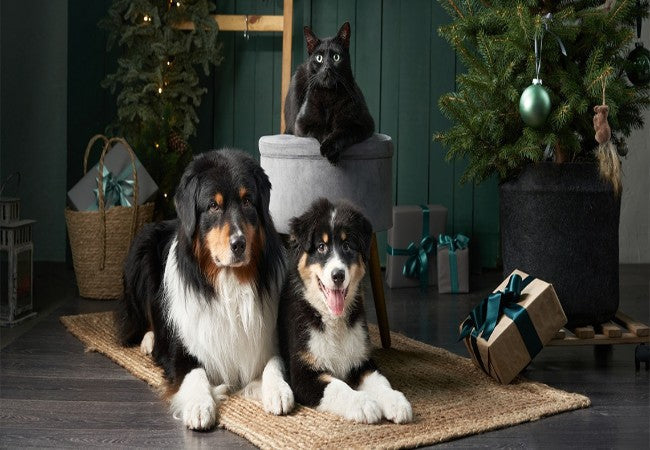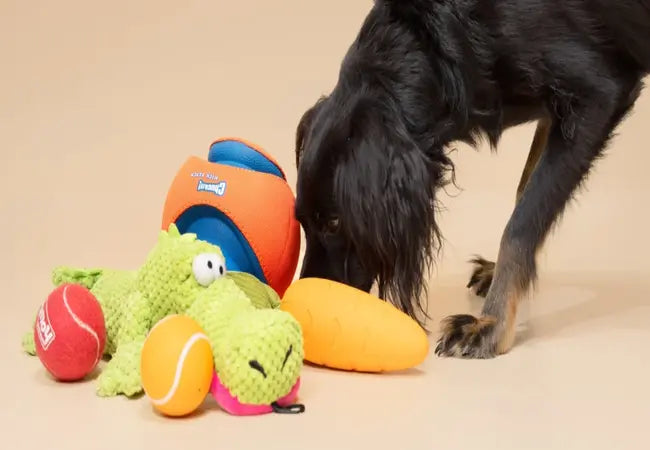Vet Guide 2025 Best Enrichment Toys for Dogs & Puppies 🐶🩺

In this article
Vet Guide 2025 Best Enrichment Toys for Dogs & Puppies 🐶🩺
By Dr. Duncan Houston BVSc
Dogs thrive not just on exercise and love, but on mental challenges that engage their natural instincts. I’m Dr Duncan Houston BVSc, and in this detailed guide, you’ll discover the best enrichment toys for all ages—from interactive puzzles to chew toys—and learn how tools from Ask A Vet, Let’s enrich their world! ✨
1. Why Enrichment Toys Matter
- 🧠 Enrichment toys challenge your dog's brain, helping to reduce boredom and destructive behaviors.
- They support cognitive development, mental sharpness, and even help senior dogs maintain brain health.
- Enhances emotional well-being by engaging natural instincts like foraging, chewing, and problem-solving.
2. Top Enrichment Toys to Try
🧩 Treat‑Dispensing Puzzle Toys
- Dispenser toys (e.g., Kong, Wobbler) provide mental effort as dogs work to release food—encouraging slower eating and focus.
- Interactive sliders, paw or nose puzzles (e.g., Nina Ottosson, Outward Hound) offer escalating challenges and great engagement.
🌿 Snuffle Mats & Foraging Toys
- Offer hidden kibble inside soft fabric strips—stimulating scent work and encouraging slow, deliberate eating.
- Great for puppies & scent-driven dogs; easy to refresh and generally low-risk.
🧸 Hide‑and‑Seek Plush Toys
- Puzzles with hide‑in plush toys appeal to burrowing instincts—combined with squeaky sounds, they offer a sensory reward.
🍽️ Slow Feeders & Lick Mats
- Slow feeders (maze bowls, UFO spinners) turn mealtime into a deliberate, engaging task.
- Lick mats deliver calming stimulation via flavored paste or wet food—good for anxious dogs too.
🐾 Chew Toys & Textured Toys
- Food-safe rubber toys (Kong, teething rings) help relieve teething pain and provide lasting satisfaction.
- Textured rubber chew toys help with gum health and anxiety relief in all ages.
3. Choosing the Right Toy
- ✔ Match difficulty to your dog’s skill: start easy, then progress to harder puzzles as they improve.
- ✔ Select appropriate size and durability—avoid small parts for chewers and choose sturdy models.
- ✔ Prioritize easy-to-clean toys to prevent mold or bacterial build-up.
4. DIY & Low‑Cost Enrichment Ideas
- Hide kibble in rolled blankets, paper bags, or around the yard for simple foraging games.
- Rotate toys weekly to keep interest high without currying boredom.
- Combine puzzles with scavenger hunts—hide treats, encourage use of nose and brain.
5. Role of Ask A Vet,
- 📱 Ask A Vet: Get personalized recommendations—share breed, age, chewing habits, and get tailored toy plans.
6. Tips for Success
- ▶ Introduce new toys with guidance—demonstrate how it works or help them solve it initially.
- ⏱ Use for dedicated sessions (5–15 minutes) and rotate regularly to sustain interest.
- ✅ Supervise first uses to ensure safety and clean toys after messy play.
- 📊 Use enrichment as a daily mental activity—rotate styles: puzzle, chew, sniff, physical play.
7. FAQs
- Q: How often should my dog use enrichment toys?
- Daily sessions—15–30 minutes—is ideal for most dogs; adjust based on energy and age level.
- Q: My dog chews everything—are puzzle toys safe?
- Choose sturdy rubber or wooden puzzle toys, supervise closely, and avoid fragile pieces.
Conclusion 💡
Enrichment toys are essential for vibrant, healthy dogs—mentally, emotionally, and physically. By offering puzzles, chew toys, snuffle mats, and slow feeders, you tap into their instincts and reduce stress and unwanted behaviors. Tailor your toolkit with help from Ask A Vet. A well-stimulated pup is a happy pup! 🐾❤️






